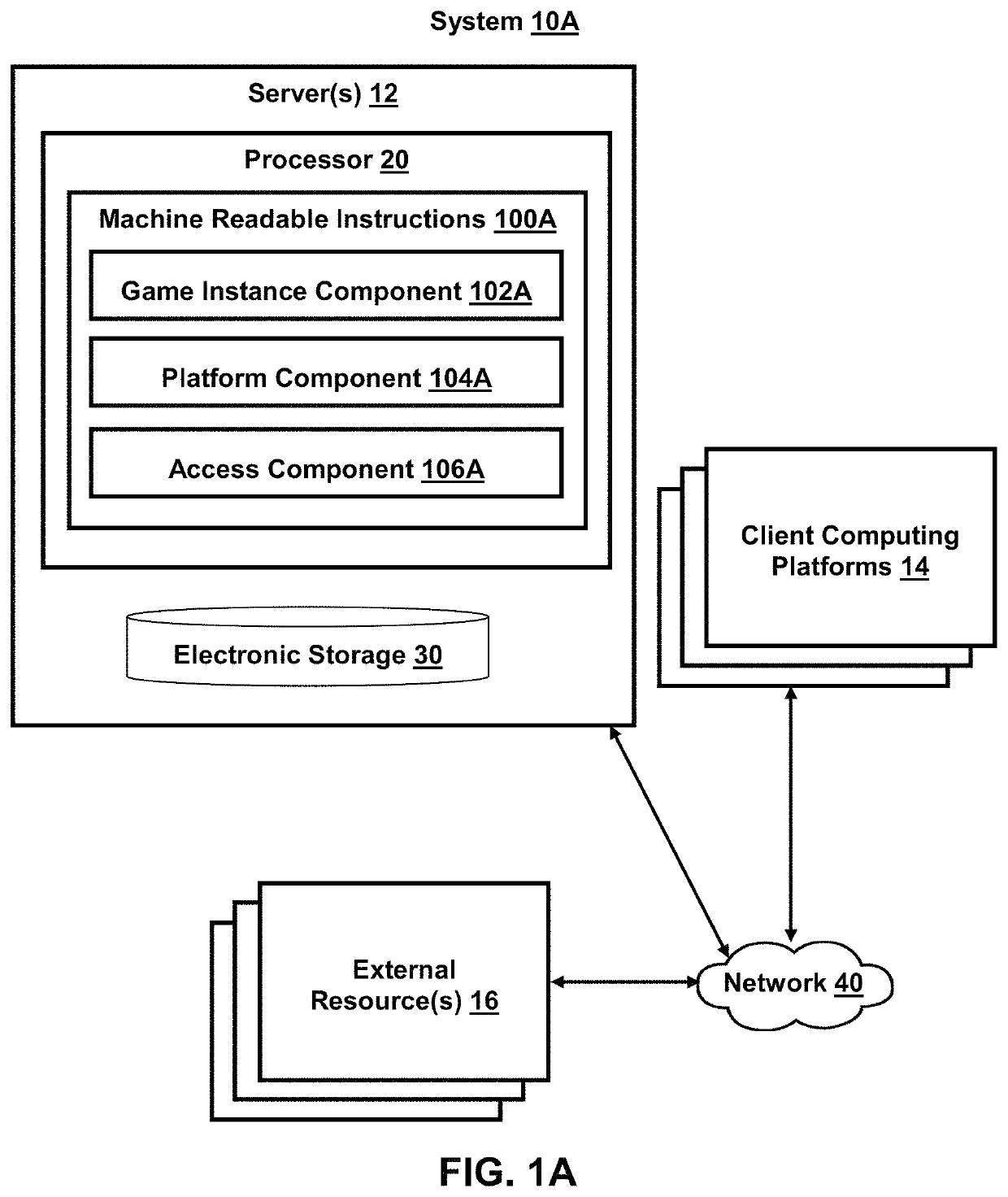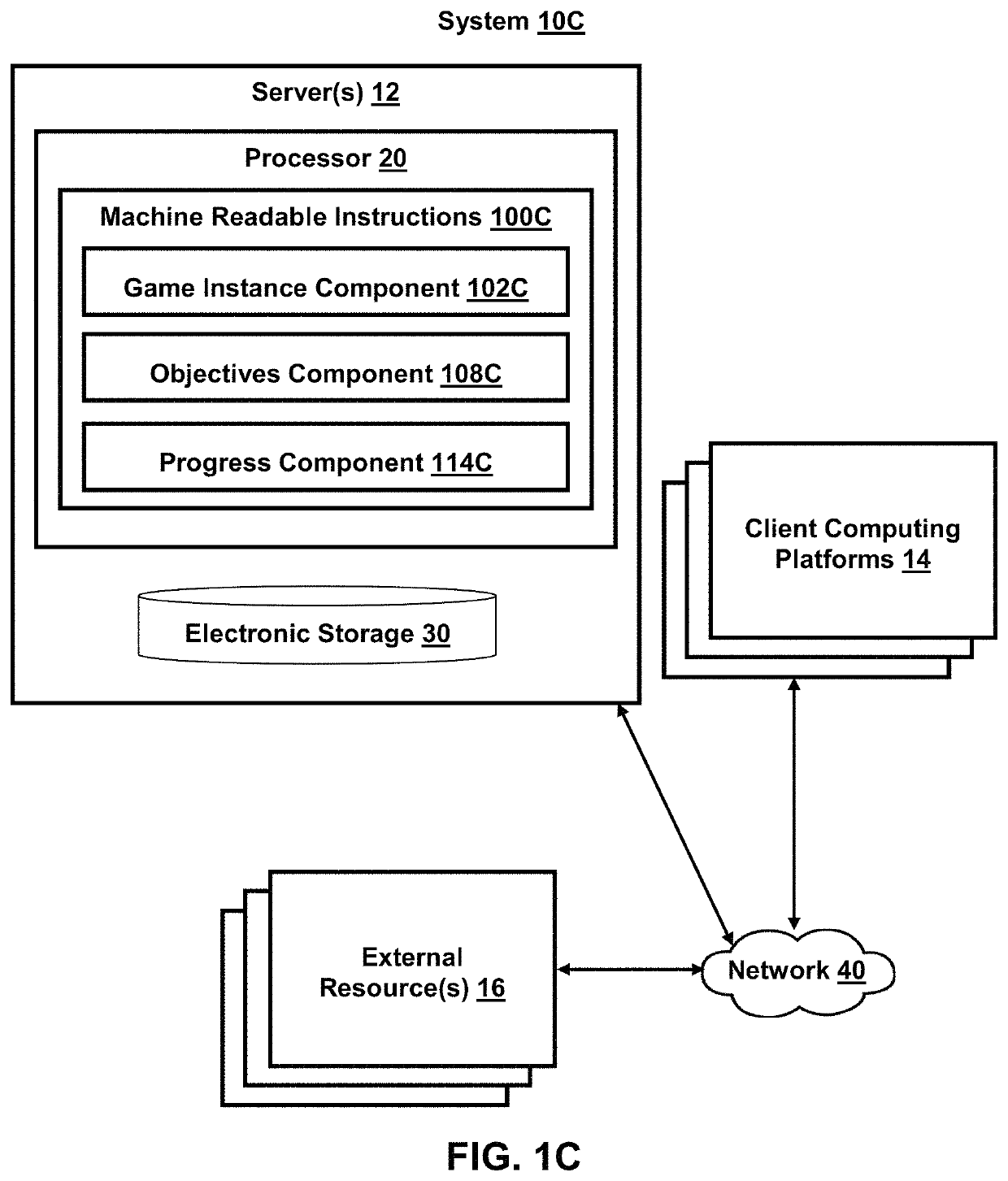Matching users of
virtual reality platforms with users of non-virtual reality platforms may be difficult because users playing via virtual reality platforms may have greater interactive potential than users playing via non-virtual reality platforms.
Providing multiplayer games with alliance between users playing the online game via non-virtual reality platforms and virtual reality platforms presents challenges because users playing via virtual reality platforms may have greater interactive potential than users playing via non-virtual reality platforms.
Monetizing the online game in virtual-reality platforms may be a challenge because the immersion when playing the online game via virtual reality may encourage some users to spend currency in the online game and / or discourage other users from spending currency.
Encouraging users, having varying reactions to virtual reality immersion, to play the online game in a manner that most effectively encourages monetization presents a unique challenge for online game providers.
Incorporating virtual-reality platforms into online games accessible via mobile platforms presents a challenge because users may get caught up in virtual reality gameplay and avoid playing the online game via the mobile platforms.
However, due to the immersive and restrictive nature of virtual reality, it may not be played as frequently or while a user is on-the-go.
This may cause game providers to lose monetization of the online game via the mobile application play because users may stop playing the online game via the mobile platform once they have experienced virtual reality.
Achieving a balance between enticing users to experience virtual reality without losing mobile platform gameplay presents a unique challenge for online game providers.
Incorporating virtual-reality platforms into online games accessible via mobile platforms presents a challenge because users may be hesitant to try virtual reality and / or users may get caught up in virtual reality
game play and avoid playing the online game via the mobile platforms.
Due to the immersive and restrictive nature of virtual reality, it may not be played as frequently or while a user is on-the-go.
Achieving a balance between enticing users to experience virtual reality without losing mobile platform gameplay presents a unique challenge for online game providers.
The non-virtual reality platforms may have limited functionality.
For example, actions available to be performed via a non-virtual reality platform may be limited compared to those available to be performed via a virtual reality platform.
The second platform may have limited functionality compared to the first platform.
If the amount of gameplay by a user via the virtual reality platform reaches a threshold amount of gameplay, the
system may limit access to the online game via the virtual reality platform.
While the virtual reality platform is restricted and / or while the requirement is unsatisfied, the online game may be available to the user via the non-virtual reality platform.
Thus, the
system and / or method described herein may limit users gameplay via the virtual reality platforms while encouraging users to remain engaged with the online game via the non-virtual reality platforms.
Gameplay via the virtual reality platforms may be limited responsive to the amount of gameplay reaching a gameplay threshold.
Limiting gameplay via the virtual reality platform may include restricting access to the online game via the virtual reality platform.
For example, the users may be able to play the online game via the non-virtual reality platforms while the gameplay of the online game via the virtual reality platforms is restricted.
As such, the first user may be able to play the online game via the second platform (e.g., the non-virtual reality platform) while the first requirement is unsatisfied.
If the amount of gameplay by a user via the virtual reality platform reaches a threshold amount of gameplay, the
system may limit access to the online game via the virtual reality platform.
While the virtual reality platform is restricted and / or while the requirement is unsatisfied, the online game may be available to the user via the non-virtual reality platform.
Thus, the system and / or method described herein may limit users gameplay via the virtual reality platforms while encouraging users to remain engaged with the online game via the non-virtual reality platforms.
Gameplay via the virtual reality platforms may be limited responsive to the amount of gameplay reaching a gameplay threshold.
Limiting gameplay via the virtual reality platform may include restricting access to the online game via the virtual reality platform.
For example, the users may be able to play the online game via the non-virtual reality platforms while the gameplay of the online game via the virtual reality platforms is restricted.
As such, the first user may be able to play the online game via the second platform (e.g., the non-virtual reality platform) while the first requirement is unsatisfied.
 Login to View More
Login to View More  Login to View More
Login to View More 


